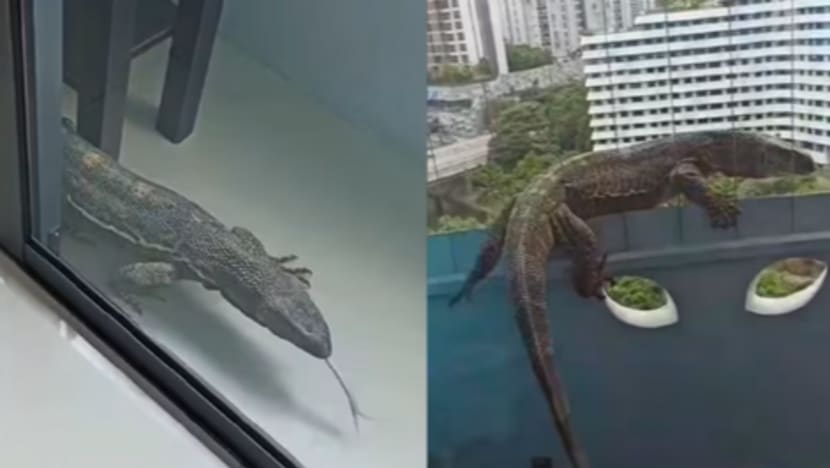Non-native monitor lizard found in Singapore flat casts spotlight on illegal exotic pet trade
The episode has raised concerns about how big the illegal exotic pet market is, and the impact non-native animals can have on local biodiversity.


This audio is generated by an AI tool.
SINGAPORE: The non-native monitor lizard that wandered into a Punggol flat last week has cast a spotlight on the exotic pet trade in Singapore.
The episode has given rise to speculation that the animal was an illegal pet.
It has also raised concerns about how big the exotic pet market is, and the impact non-native animals can have on local biodiversity.
DEMAND FOR EXOTIC ANIMALS
On Wednesday (Jul 3), the National Parks Board (NParks) said it is investigating the case of the Rock Monitor lizard, which is not native to Singapore. The Rock Monitor is a species of monitor lizard found in Africa and is typically grey-brown with yellowish or white markings.
The resident whose home the lizard had wandered into told CNA that it appeared clean, did not bring in any mud, and its markings were "not like the ones you see outside".
The agency was alerted to the sighting on Jun 27, and subsequently secured and removed the monitor lizard from the HDB flat.
Monitor lizards are not allowed to be kept as pets in Singapore.
NParks reminded people who want to buy pets to do so through licensed pet shops or farms, adding that it is illegal under Singapore’s Wildlife Act to remove animals, including monitor lizards, from the wild.
Anyone caught illegally selling or exporting wildlife can face a fine of up to S$10,000 or imprisonment of up to six months, or both, for a first offence.
But despite this, there is still demand for the illegal trade of exotic animals.
One pet store told CNA that some customers want more than just frogs and turtles.
“What they're looking for is harder to get because they're illegal,” said Mr Phey Zheng Yang, a partner at Res Paradise, adding that Singapore is very strict when it comes to pet trade.
“Customers actually come into my store to look for sugar gliders, axolotls or even geckos but those are not really allowed.”
KEEPING MONITOR LIZARDS AS PETS ILLEGAL, DANGEROUS
Mr Kannan Raja, president of the Herpetological Society of Singapore, said Rock Monitors are generally large animals.
“Being a Rock Monitor, which is clearly not native, this animal would not have ended up here by itself,” he said.
“So this is probably part of the illegal pet trade. So it could have been an escaped or abandoned pet. As such, it's used to humans and maybe that's why it was quite comfortable within a home or near the people.
“It only started moving a little when people got too close to it. So it’s used to people, hence it was quite calm.”
Mr Kannan, whose society is involved in the study and conservation of reptiles and amphibians, said even though the monitor lizard can climb, “you wouldn’t see a monitor lizard climbing straight up 11 storeys” from the ground.
“Even if food was present, they might climb for short distances,” he noted.
He added that keeping monitor lizards as pets is not only illegal, it can also be dangerous.
Compared to ordinary pets like cats or dogs, these reptiles have more teeth and larger claws, and “kind of eat what they can get their jaws around”. Some species even carry venom.
“They have very good defence mechanisms,” said Mr Kannan. “So if you do stress them or if you get too near, you could receive a bad bite or a scratch.”
Listen:
Non-native animals can also harm Singapore's biodiversity.
“They will start competing for food and mates and when that happens, if our native reptiles cannot stand their own, if they are smaller, or if they feel threatened, they may actually move away to different areas and you will end up seeing this non-native animal becoming more dominantly seen as compared to our native reptiles,” said Mr Kannan.
“It has happened before in other countries as well, where sometimes the native reptile can even go extinct because of this non-native animal’s presence and pressure.”


















